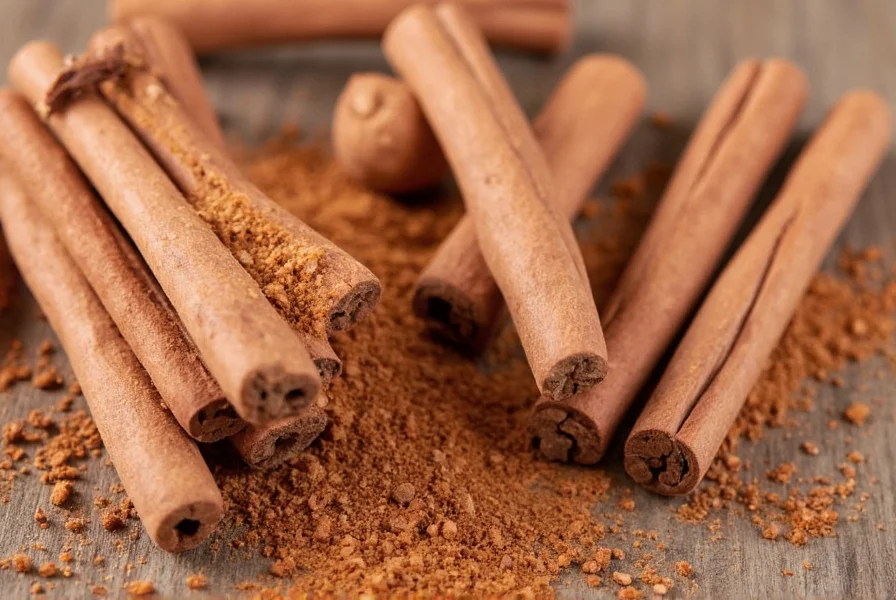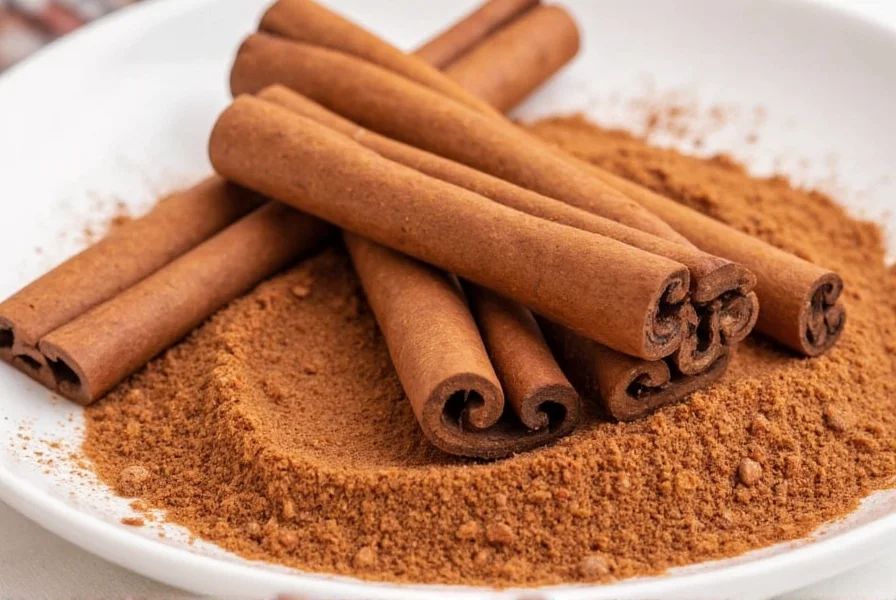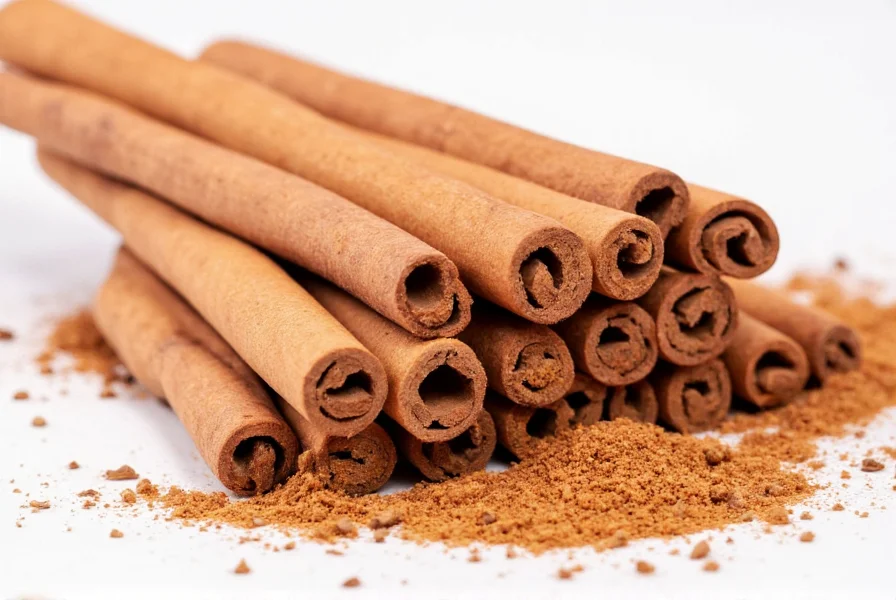Understanding Organic True Cinnamon: Nature's Premium Spice
When you reach for that bottle labeled "organic true cinnamon," you're selecting a superior spice variety with distinct advantages over the more common cassia cinnamon found in most supermarkets. True cinnamon, scientifically known as Cinnamomum verum (meaning "true cinnamon"), originates from Sri Lanka and southern India. The "organic" certification confirms it's cultivated without synthetic pesticides, herbicides, or fertilizers, preserving its natural integrity from farm to table.
What makes organic true cinnamon special? This delicate spice contains only trace amounts of coumarin (0.004-0.13%), compared to cassia cinnamon's significantly higher levels (2.15-6.97%). Coumarin, while safe in small quantities, can cause liver damage when consumed regularly in larger amounts. This critical difference makes organic Ceylon cinnamon the preferred choice for daily use, especially for children, pregnant women, and those with liver conditions.

True Cinnamon vs. Cassia: Key Differences You Should Know
Most cinnamon sold globally is actually cassia, often misleadingly labeled simply as "cinnamon." Understanding the distinction between organic true cinnamon and cassia is essential for both culinary excellence and health considerations.
| Characteristic | Organic True Cinnamon (Ceylon) | Cassia Cinnamon |
|---|---|---|
| Scientific Name | Cinnamomum verum | Cinnamomum cassia |
| Origin | Sri Lanka, India | China, Indonesia, Vietnam |
| Coumarin Content | Very low (0.004-0.13%) | High (2.15-6.97%) |
| Bark Structure | Multiple thin, delicate layers | Single thick, hard layer |
| Flavor Profile | Mild, sweet, citrusy notes | Strong, spicy, slightly bitter |
| Color | Light tan to pale brown | Dark reddish-brown |
Identifying Authentic Organic True Cinnamon
Spotting genuine organic Ceylon cinnamon requires attention to physical characteristics. True cinnamon sticks form delicate, multi-layered "quills" that resemble rolled-up newspaper, while cassia forms a single thick, hard tube. When broken, Ceylon cinnamon snaps cleanly with a light, sweet aroma, whereas cassia requires significant force to break and emits a stronger, more pungent scent.
For ground cinnamon, check the label carefully—many products blend both varieties. Look for specific mentions of "Ceylon," "Cinnamomum verum," or "true cinnamon." Third-party organic certifications like USDA Organic, EU Organic, or India Organic provide additional assurance of cultivation practices.
Health Benefits Supported by Research
Organic true cinnamon offers several potential health advantages, with research suggesting benefits for metabolic health, inflammation reduction, and antioxidant protection. Unlike cassia, its low coumarin content makes these benefits accessible through regular, moderate consumption.
Blood Sugar Regulation
Multiple studies indicate that Ceylon cinnamon may help improve insulin sensitivity and lower blood glucose levels. A 2015 review in the Journal of Traditional and Complementary Medicine noted that cinnamon compounds can mimic insulin and enhance glucose uptake by cells. For those managing prediabetes or type 2 diabetes, incorporating 1-2 grams of organic true cinnamon daily may support conventional treatment approaches.
Antioxidant Powerhouse
True cinnamon ranks among the most antioxidant-rich foods by weight. Its polyphenol content exceeds even that of many berries, helping combat oxidative stress that contributes to chronic diseases. These antioxidants also give organic true cinnamon its anti-inflammatory properties, potentially benefiting those with arthritis or other inflammatory conditions.

Practical Uses in Your Kitchen
Organic true cinnamon's delicate flavor profile shines in both sweet and savory applications. Unlike cassia, which can overpower dishes, Ceylon cinnamon complements rather than dominates.
Culinary Applications
- Baking: Use in delicate pastries, custards, and fruit-based desserts where its subtle citrus notes enhance without overwhelming
- Beverages: Stir into coffee, hot chocolate, or golden milk for a nuanced flavor experience
- Savory Dishes: Add to Moroccan tagines, Persian rice dishes, or Middle Eastern spice blends
- Breakfast: Sprinkle on oatmeal, yogurt, or fruit salads for natural sweetness
Recommended Daily Intake
While cassia cinnamon consumption should be limited to 1-2 teaspoons occasionally due to coumarin concerns, organic true cinnamon can be safely consumed daily. Most experts recommend 1-2 grams (approximately 1/2 to 1 teaspoon) per day to gain health benefits without risk. For therapeutic purposes under medical supervision, doses up to 3 grams daily have been studied.
Shopping Guide for Authentic Products
When purchasing organic true cinnamon, look for these quality indicators:
- Clear labeling specifying "Ceylon," "Cinnamomum verum," or "true cinnamon"
- Recognized organic certification seals
- Lighter color and delicate quill structure for sticks
- Origin information specifying Sri Lanka or southern India
- Reasonable pricing (true cinnamon typically costs 2-3 times more than cassia)
Avoid products labeled simply as "cinnamon" without specifying the variety, as these almost always contain cassia. Reputable specialty spice retailers, health food stores, and online merchants focusing on single-origin spices typically offer authentic organic Ceylon cinnamon.
Storage Tips for Maximum Freshness
To preserve the delicate flavor compounds in organic true cinnamon, store it properly:
- Keep in an airtight container away from light and heat
- Whole sticks retain freshness longer than ground powder (up to 2 years vs. 6-12 months)
- Grind sticks as needed for maximum flavor intensity
- Store in a cool, dark cupboard rather than near the stove
Frequently Asked Questions
Is organic true cinnamon the same as Ceylon cinnamon?
Yes, organic true cinnamon is the same as Ceylon cinnamon (Cinnamomum verum). The "organic" designation indicates it was grown without synthetic pesticides or fertilizers. True cinnamon specifically refers to Ceylon variety, which is botanically distinct from the more common cassia cinnamon.
Why is true cinnamon better than regular cinnamon?
True cinnamon (Ceylon) contains significantly less coumarin than cassia ("regular") cinnamon, making it safer for regular consumption. It also has a more delicate, complex flavor profile with citrus notes, and research suggests it may offer superior health benefits for blood sugar regulation due to different compound concentrations.
How much organic true cinnamon should I consume daily?
For general health benefits, 1-2 grams (approximately 1/2 to 1 teaspoon) of organic true cinnamon daily is considered safe and effective. Unlike cassia cinnamon, Ceylon's minimal coumarin content allows for regular consumption without liver health concerns. Those using it for specific health conditions should consult with a healthcare provider for personalized recommendations.
Can I substitute organic true cinnamon for regular cinnamon in recipes?
Yes, but adjust quantities as needed. Organic true cinnamon has a more delicate flavor than cassia, so you may need to use slightly more (up to 1.5 times the amount) to achieve similar flavor intensity. In delicate dishes like custards or light-colored baked goods, true cinnamon's lighter color won't discolor the final product like darker cassia might.
Does organic true cinnamon help with blood sugar control?
Research suggests organic true cinnamon may help improve insulin sensitivity and moderate blood glucose spikes after meals. Multiple studies, including a 2013 review in the Annals of Family Medicine, indicate cinnamon's potential benefits for metabolic health. However, it should complement—not replace—standard diabetes management approaches, and those with blood sugar concerns should consult their healthcare provider.











 浙公网安备
33010002000092号
浙公网安备
33010002000092号 浙B2-20120091-4
浙B2-20120091-4